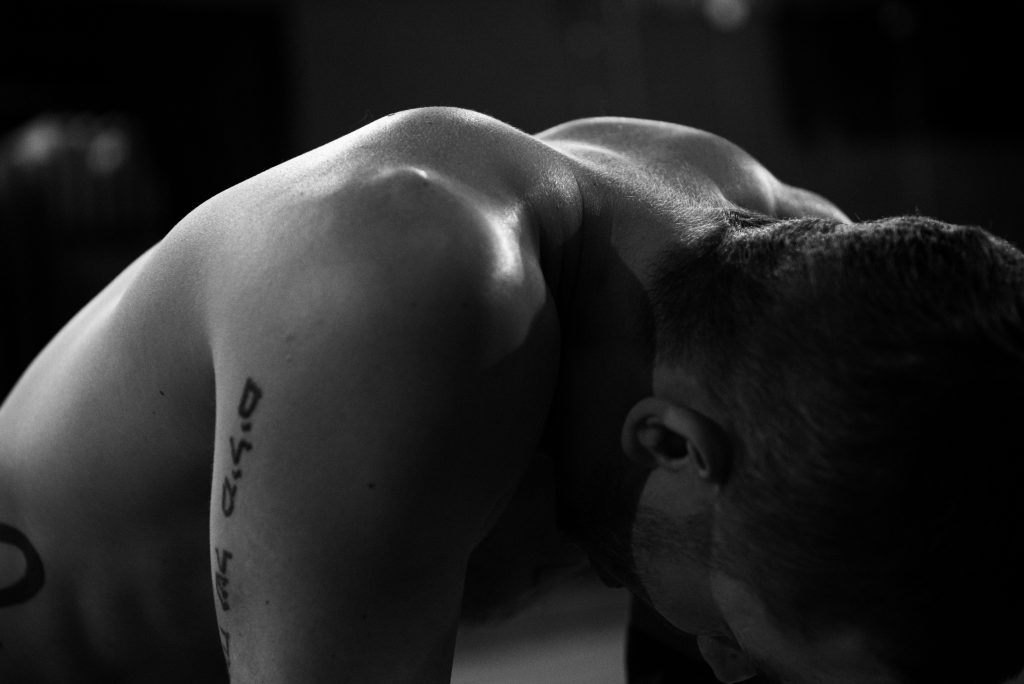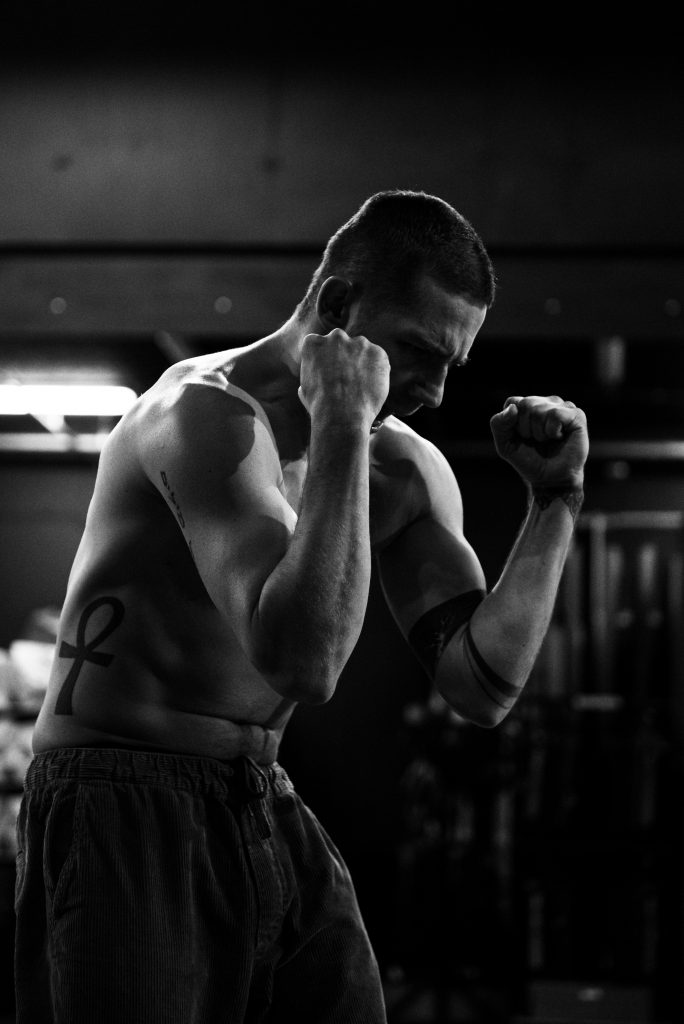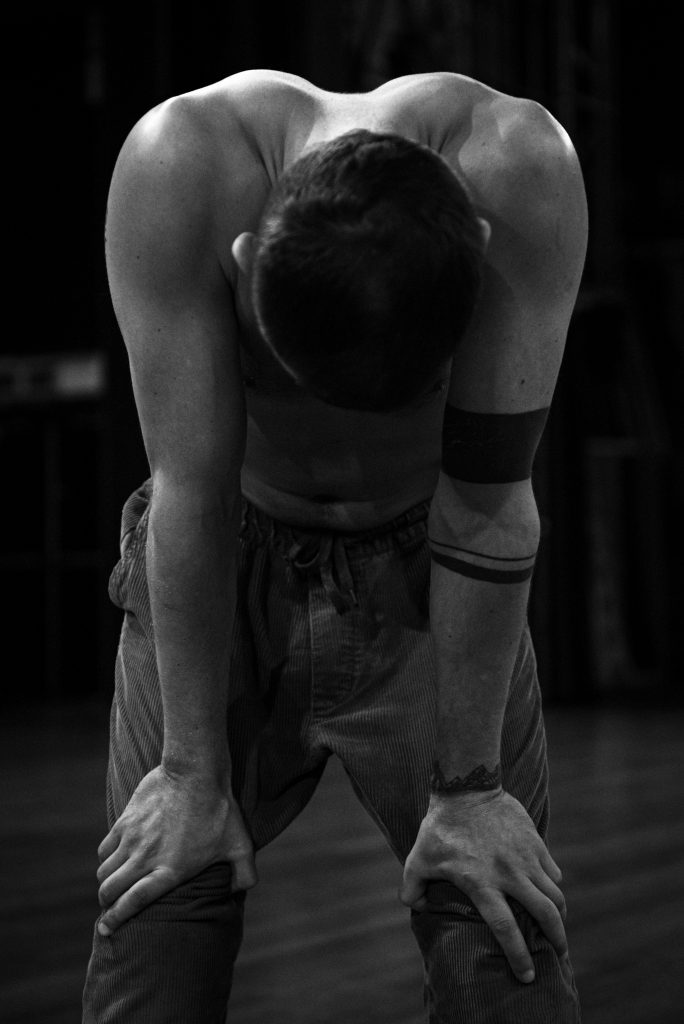ARE WE REALLY EVER PART OF A PERFORMING ARTS ORGY?
Last Resistance by Annemijn Rijk
Critic Anette Therese Pettersen (NO) on Last Resistance by Annemijn Rijk.
Intro
Up-beat music in a loop, while I eat my spaghetti and sit in a sort of digital waiting room waiting for the Last Resistance to begin. I’m a bit delayed, as I have gotten back from Oslo only minutes before – my first trip out of Kristiansand (the rather small city in Norway which I’m currently living in) in months – so my time is planned poorly. The reason for my trip was to attend a ‘real’ performance there (I keep calling it ‘real’, but I mean physically in the same room, it’s not as if the digital performance is not real, we just share a different space). The premiere of a choreographer I have worked with over many years, and with this winter’s Covid restrictions, I was quite pessimistic regarding getting a chance to see it. But when I was allowed a spot – a golden chair, so to speak – I jumped on a bus and checked in to a hotel and practically ran to the theatre to see Henriette Pedersen’s MADAM. While unpacking my small bag at the hotel in Oslo I got a feeling of freedom and mobility that caused a sort of high, and the unpacking of things evoked earlier unpacking sessions at other hotels, in other places, in front of other performances, which further awoke hope of other travels to take place, and thus the intoxicating feeling.
It’s with the aftermath of MADAM in my body that I sit down and try to finish my spaghetti before the Last Resistance begins. The intoxicating hope of again being able to travel to ‘s-Hertogenbosch, Utrecht, Brussels or Berlin, and the following disappointment of yet another evening spent in front of the MacBook instead. It is not Moving Futures, DansBrabant or Annemijn Rijk’s fault that I have to watch Last Resistance this way, but the aversion towards my computer that this year of pandemic life has caused, is also difficult to avoid or move around.
*
“You cannot really see me”, the dancer Blazej Jansinski says, as he enters the stage, surrounded by a very small audience, seated on chairs in a circle (most likely two meters or two feet or some other pandemic parameter apart). “You cannot really see me” connects to my thoughts exactly, as I look at the screen, fumble with my pencil as I try to watch, take notes and also eat the last of my dinner and sip a bit of beer. I can see you, I can see the performer (as well as the audience – whom I partially know, and hence makes me feel the performance is somewhat ‘more’ real), but I wonder to what extent I as a digital audience am thought into the performance. Is it really for me?
Being part of that small audience in Oslo the day before was in every way a different experience. I knew the choreographer, the performers as well as my five other co-spectators. It was a very clear contract one enters as a member of that audience, the pressure is on, and I felt committed to the process – to be in some sort of communication with them. A sort of positive social control, where I am acting a certain way not necessarily because someone forces me to do it, but because I want to either be perceived a specific way or contribute to a type of atmosphere in the collective we are forming.
I wonder about this as a female voice says: “there’s always someone”, as the male dancer takes off his shirt (but keeps on his light brown corduroy pants) and kneels on the floor, in a static table-top position. “Sometimes the healing hurts more than the wound”, she says, and I also notice another sound. A scraping sound – as if someone was doodling with a pencil on paper, or a record player come to the end or something. He turns slightly on the stage, and the camera also shifts. It zooms in and out and decides where I should keep my eyes. They add and enforce the rhythm of the movements of the dancer.
“It’s futile and you know it”, she says.
He’s standing.
Bending.
Circling.
I’m fidgeting.
Is he fighting with an invisible enemy?
“….by fighting”, I hear the female voice say.
My thoughts are in a weird sort of dialogue with the performance, am I being choreographed or am I choreographing them?
It’s a socially distanced sort of fighting going on on stage, with the dancer lashing out at no one. Masturbation, they had called the performance I saw the day before in Oslo. A performance about lust and despair and the longing for both sex and death, and none of us know to what extent the social distance between the performers in that production was a result of the pandemic or the performance material. But instead of interactions they all moved about on their own – is it still called group sex if no one interact? Are three parallel masturbations an orgy, I wonder as I scribble and fumble with my phone yet again, while the dancer on the screen slides and jumps. He is panting and breathing as he turns about, crawling out of the small (or – not really small, but made up by few) ring of spectators. The music stops, he crosses the stages back and forth, and turns on an old phone record machine. The same female voice appears again: “There’s plenty of choice”, she says.
But it’s the lack of choice – or is it the vast amount of it? – that keeps me from connecting with the performance. The lack or impossibility to affect and be affected, that keeps my body from reacting or in other ways getting connected. It’s a bit more like reading an academic article than seeing a dance performance; i’’s as if my body has been shut, if not off – it is surely present – but shut out, and therefore my hands keep picking up my phone or jotting down things on my notepad.
“I like myself”, the dancer says. He keeps repeating it, while banging his fists on his own head, as if he doesn’t believe his own words. He jumps on the spot, with his fists held high, as if he is getting ready for a battle or a fight. Its rhythmical, but he doesn’t seem convinced. The female voice starts commenting on his laugh, and a sort of dialogue between them begins. Or maybe there has been a dialogue all the time? Maybe my own thoughts and fidgeting is a part of this dialogue as well?
*
Are we really ever part of a performing arts orgy? Or are we all just masturbating alone, focused on our own delight and satisfaction, instead of contributing to a shared pleasure? The thoughts of togetherness, collectivity and perversity has been started by the performance in Oslo and will not let go as I listen to the voice in Last Resistance and especially as I watch the at times almost tortured-like body on stage, in the circle of on-lookers surrounding him, and with the vast and more distant or even foggy community of peepers online, the performing arts seems like a perversion more than ever.
A friend of mine told me that they had discovered a cruising environment during the pandemic. In their daily walks about the city, they had discovered a strange collection of people in a park. Or, not really collection – more like people being spread out on benches and interacting in short conversations, before separating or disappearing off together. After some time, and a brief conversation with one of them, the sexual character of the interventions was revealed. People hooking up for midday sexual encounters, with my friend cast in the role of the onlooker; the audience.
And with the performances happening online the role of the peeper, the peeping Tom, becomes more distinct. Having my camera turned off, I am safe in my own environment, left to my own preferred ways of watching (or not), and I feel partly indifferent and partly alienated. I would never fidget with my phone this way if I thought the performer (or the other spectators) could see me. It is a private behavior that underlines my role as someone who is looking in on something and is not really part of it.
*
The dialogue between the female voice and the dancer continues, about an episode from the dancer’s childhood involving a diving board. “…tangible proof that you have a body, that you are alive”, the voice says. This yet again evokes the ‘real’ performance from the day before in me, how it is still being digested and tentatively entangled. With the digital performance I can always divert my eyes and my attention. Actually – I find it hard not to do it, I find it almost impossible to have my eyes locked to the screen for a long time, whereas in the theatre space there is nowhere for my eyes to be diverted but to blackout by closing my eyes if I need a break. It is this intensity that also makes it possible to stay with the performance, to think with it, against and beside it, throughout the entire duration.
The dancer is standing on the floor, in the circle, and the falling down, lying flat on his back. “It’s futile and you know it”, the voice comments.
*
Epilogue/ending
As I finally finish this text I have traveled across the country to a semi-deserted semi-island in the far north. At the tip of the island, I observe the searing sea and birds hovering above it, as I watch other performances on my MacBook screen, digitally attending festivals in Brussels and Berlin, communicating with a co-spectator on Whatsapp. I spend my days reading and writing, and realize how different it is to spend so much time in front of the computer – including watching performances – with the sea, sky and birds as a backdrop, compared to my kitchen and backyard view last week. How nature as a background or scenography invites to listening and concentrating, whereas the city makes me reach for my phone or want to move on to other tasks. It is something about how space inflicts focus, which of course is obvious – as seeing a performance in a black box compared to a gallery space are two different modes and experiences. But it didn’t really occur to me until now that where I sit down with my computer to watch a performance will have such a big impact.
Critic Anette Therese Pettersen (NO) on Last Resistance by Annemijn Rijk after seeing the online try-out of this performance on April 28 2021 on the online Moving Futures Festival. This essay was commissioned by DansBrabant as part of Dance&Dare, a course series and movement by Domain for Art Criticism and DansBrabant in which writers search for new words for new dance.


